In: digital photography

Lauren E. Simonutti | 1968 – 2012
July 25, 2024LAUREN E. SIMONUTTI | 1968 – 2012
It is somewhat at a remove, but no less sad, to mourn the passing of a person whose artwork comes into your purview and you find it enticing and uncanny and unsettling in the best way ― and then you find out that they passed some time ago. There won’t be anything more than what is already there, and there is a finality there – even a loss, perhaps, though it’s oddly ‘retroactive’, though that word seems inexact – that adds a further tinge of sadness.
Simonutti passed at the age of 44 : her struggle with schizophrenia ‘consumed her until she torn from life’ (to quote one of the many online testimonials to her).
A number of Simonutti’s evocative images appeared in my social media feed, and that led me to research a bit more, and become enamoured of her haunting photographs. Perhaps that’s a dangerous word – ‘haunting’ – to use : she passed over a decade ago, and her images still proliferate appropriately, but there’s that notion of what is left behind and lingers…like a ghost. If you believe in such things, that is.
These are powerful images, and have even more to consider in that the artist died so young, and struggled with mental illness. Often, as a critic, I wonder if my words add more or simply distract : when considering writing about her work, this was a concern, and so I thought it best – most appropriate – to present them with the more resonant words of others that engage in a dialogue with the photos, perhaps in unison, perhaps in a contested manner.
I will say very little, but will try to be like Bruno LaTour’s assertions about what an art critic should be, and try to simply offer a bit of direction while not being overt and overbearing….
Simonutti, in speaking of her life and work, was unapologetic and frank about her struggles with mental illness. When I read her words, I was reminded of one of my favourite statements about ‘sanity’ (it comes from G. K. Chesterton, whom I have mixed feelings about, but I became familiar with it from Timothy Findley’s fine book HEADHUNTER – which I cite below – so I feel Findley’s empathy overrides Chesterton’s smug catholic ‘knowing’…) :
The madman is not the man who has lost his reason.
The madman is the man who has lost everything except his reason.
This was where Marlow began the treatment of every patient.
I also thought of Findley’s HEADHUNTER for an exchange between Doctor Marlow and the sister of one of his patients. They’re discussing how Marlow wants Olivia’s permission to discharge her sister Amy, who is an award winning, acclaimed poet but also suffers from bouts of schizophrenia :
Olivia who had been faithful in her visits—and had seen Amy twice a week—said: “But she hasn’t been cured.”
Marlow said: “She will never be cured, Mrs. Price. Never. As a consequence, we have two choices. We can opt for one Amy or another.”
“One or another?”
“One of them—assuming we can adjust her medication successfully—would spend the rest of her life in a drugged condition that would amount, in effect, to sedation. This Amy would have no poems, no birds, no Wormwood [her cat], no other world but the dead world out there now—and she would be incapable of responding to it. It would simply be a landscape through which she moved— deadened, uncaring and uninvolved.”
“And the other Amy?”
“The other Amy would have a minimum of medication. Only enough to reduce the extremities of her anxiety. She would be a slightly less tense version of the Amy we have now.”
Olivia looked from the window. “What would become of her?” she said.
“She could go home to her house—and be with her birds.”
“But—dear God. Doesn’t freedom put her in jeopardy?”
“Not in my view, no,” said Marlow. “It would give Amy back the only life in which she can function—in which she is happy.”
“What about her writing?”
“There is every chance this Amy would continue to produce poetry. After all, the Amy who wrote in the past was very nearly the Amy we have.”
An excerpt of Simonutti’s own insightful and almost painfully self aware words :
This is a visual narrative of an unexpected & devastating situation in which I find myself, which also is relevant to the lives of many others. It’s just not often spoken about.
Madness strips things down to their core. It takes everything, and in exchange offers more madness, and the occasional ability to see things that are not there.
I’ve selected a number of Simonutti’s images below to share, with my ‘speaking in collage’ to accompany them. I have attempted to find a synchronicity between the tableaux the artist has presented, and the titles and words she chose to accompany them.
You can explore those at the main post here.
Read More

Emmanuel Georges | America Rewind
July 16, 2024Emmanuel Georges | America Rewind
I am making final edits on this article on the evening of the day of the incident where Trump was shot at, at a Reichsparteitag in Butler, Pennsylvania. I’ll offer no further commentary on this, as at the time of this writing, rumours and partisan commentary is moving at a speed faster than light, and all I can think of is the Reichstag ‘fire’…..that is the disclaimer I offer, before we proceed.
* * * * * * * * * * * * * * * * * * *
It is nigh impossible to consider Georges’ images and solely ‘read’ them as a commentary on the ‘American Dream’ and not be overwhelmed with how it’s a visual essay that is part of contemporary dialogue about the fate, if you will, of the United States, even if some of the images are over a decade old.
When I began considering this series, I was impressed with the way the photographs both inspired and intersected with socio – historical commentaries on the United States. Some of these are older, like de Tocqueville, or Howard Zinn‘s fine People’s History series (I will even admit to revisiting Eric Hobsbawm, and in a peripheral manner rereading parts of Margaret MacMillan’s Nixon in China: The Week That Changed the World). But others are more immediate, like Morris Berman‘s series on the United States that seemed to resonate the most with Georges’ images and intent.
And living in the Niagara region, or as a Canadian (though I suspect this applies to most people in the world observing) watching the decline of the American Empire with a front row seat (whether we want it or not, like attending a play where you might get splashed by the king’s blood when MacBeth does him in) we consider our Southern neighbour and their national imaginary as much, if not more, than our own….
Unlike some of the previous photographers featured – Jordano, Fairbairn, Green, many others – these scenes that Georges has presented us seem more sterile, more abandoned, less about a #rustbeltwonderland or ‘ruin porn’ aesthetic but are about actual ruination and catastrophe without an aesthetic barrier. Also a contrasting factor to when I respond to many artists, especially photographers, I feel that with Georges’ images I have so much to say, so many threads to pull together because of not just the evocative nature of his work but also the subject matter he’s exploring, that any words I say will inadvertently miss something important. Perhaps because I see Georges’ images as much as a historical document as they are art….
The words of Gore Vidal, whose commentary on ‘America’ was often clear if caustic, also came to mind : The world Julian wanted to preserve and restore is gone; the barbarians are at the gate. Yet when they breach the wall, they will find nothing of value to seize, only empty relics. The spirit of what we were has fled.
Amusingly – or more bleakly, edit as you will – that quote is from Vidal’s ‘bestseller about the fourth-century Roman emperor who famously tried to halt the spread of Christianity’ : that failed, of course. To quote another writer (putting words into the mouth of Caesar Augustus) “there are two futures, you see. Two ways it could go. In one future, the Romans sputter and flare like Greek fire, last a few hundred years and are gone — eaten from outside by barbarians, from inside by strange gods….”
Those bleak words of Vidal (and Neil Gaiman) mesh with the statement about the photographs from the artist :
Traveling across the United States, the French photographer Emmanuel Georges went in search of the American dream.
. . . . . . . . . . . .
Georges’s recurring motifs—decaying façades of industrial buildings, garages, motels, movie theaters—become iconic images of American urban landscapes. Profoundly permeated by an omnipresent sense of melancholy, the empty streets, old cars, and abandoned gas stations are testimony to the end of the American dream.
I mentioned Morris Berman above. He’s written several books about the contemporary socio political sphere – specifically focused on decline – in the United States, with the most recent one being ominously titled Dark Ages America The Final Phase of Empire. It was published several years before Georges began his America Rewind series, so the current atmosphere in the United States is not surprising nor unpredictable to those paying attention and with a sense of history….
Berman’s words :
[Noam] Chomsky and [Michael] Moore would, metaphorically speaking, say that we have been raped by the corporate-consumerist-military establishment, but I suspect it was more like a seduction: if this was sex, it was definitely consensual.
We are in a state of advanced cultural disintegration, or what might be termed spiritual death. Given the emptiness, alienation, violence, and ignorance that are now pervasive in this country, it is hard to imagine where a recovery would come from. The self-correction theory is at least partly based on the popular reaction of an informed citizenry. In this regard, the nature of the American populace today is not a source of inspiration or hope.
In a bit of synchronicity, as I was working on this I was also having a conversation with Juliana D’Intino about her Connecting Rods work (which I’ve previously written about here). We were having a conversation about trying to create works and foster a conversation that is not just ‘ruin porn’ but that speaks to larger issues of social history and – as with Georges’ images – what is now lost, and likely never to be regained or recreated….
This raised the issue of the challenge when the aesthetic pleasure invoked by an image is in stark contrast to the concepts that inspired it. When I first encountered Emmanuel Georges’ America Rewind, I had this same concern. As I often do, I found the ‘right’ words by speaking in the voice of others, and I’ll end with a quote that I shared when I first reshared some of this artist’s images in the social media sphere. These are the thoughts of one of the characters in Atwood’s The Robber Bride, who is an historian with an affinity for choosing unique places to stand in considering the past:
Who cares? Almost nobody. Maybe it’s just a hobby, something to do on a dull day. Or else it’s an act of defiance: these histories may be ragged and threadbare, patched together from worthless leftovers, but to her they are also flags, hoisted with a certain jaunty insolence, waving bravely though inconsequentially, glimpsed here and there through the trees, on the mountain roads, among the ruins, on the long march into chaos.
I have selected a less positive place to stand than Atwood’s character : perhaps I am feeling my age, or not. But I am thinking of the T.S. Eliot line (from The Wasteland) of these fragments I have shored against my ruins…..For you know only a heap of broken images.
Many more images from this series – and more of Georges artwork – can be seen here.
~ Bart Gazzola
Read More
Barry Smith | What’s Your Stance? | 2024
June 29, 2024Barry Smith | What’s Your Stance? | 2024
Barry Smith’s exhibition What’s Your Stance? was on view at Mahtay Café & Lounge in downtown St. Catharines for the majority of the month of May 2024 and into early June. Smith’s exhibition was the 18th in my continuing series of shows in the space platforming visual artists of the Niagara Region that is soon to mark two years.
Smith is not – on social media or in life – shy about his own ‘stance’ and his own political views. I’ve known him for most of my time in Niagara, and the exhibition is a series of images of photographers taking photos that Smith has captured in the act. There’s a voyeurism to the work, but the nature of the installation in the downtown St. Catharines space also allows play and interaction between the ‘characters’ as they seem to be taking pictures of each other, or are looking at people and events unknown and unseen to us.
Smith’s statement : Everyone has their opinions. Whether it be in the social, political or religious sphere. Some are based on fact, some on faith, and some are emotional due to personal experiences, education and (sadly) social media.
We all have a point of view. Some are balanced, conservative or outright risky.
I see this in the way people take photographs. Some are amateurs, some hobbyists and others are professional – but everyone has their own stance.
What’s your stance?
To say we live in a time when contention and division between peoples’ respective stances is intense is an understatement. Smith, for example, is a vocal advocate for Palestine and against the ongoing genocide perpetuated by the state of Israel and her enablers on the international scene. In our shared community – and many, many others – this is a ‘stance’ many of us see as being a default one, while others choose to stand somewhere else….
I often see things – I choose to stand, in my interpretation – through the lens of the art world, both in Canada (that imaginary nation we live in) and the larger international discourses within that sphere.
With the current situation in the Middle East, fractures – splits that expose or exacerbate hypocrisy – are becoming harder to deny. The termination of Wanda Nanibush from her position at the AGO, for example, spearheaded by someone who will allude to how art should have a social conscience and challenge us, but ‘just not that way’, or more exactly NOT in a way they ‘disagree’ with is a fine example.
I’d offer another : as many of you know, I spent nearly two decades in Saskatchewan, a place rife with racism regarding Indigenous and Settler relations. I was deeply amused – and not surprised at all – at the hypocrisy of someone I had the lamentable experience to work with in the ARC spaces publishing an article with Galleries West, decrying what he saw as ‘rising antisemitism’ in the international art world. This same person was instrumental in attempting to silence and blackball me when I published numerous factual articles about the institutional racism at his employer, the University of Saskatchewan, and I thought when I saw his blinkered whining that perhaps he had begun to see that dehumanizing others is not something that can be contained to one space, and bleeds into others, especially when you legitimize it for your own ideology, thinking it is ‘unique.’
Recently I read an engaging article from ArtForum about the rise in protests in museums and in gallery spaces and the writer – Charlotte Kent – offered a number of ideas and writers that I’ve been researching since I read the piece about how cultural spaces are stakeholders and often consistent – if not eager – manufacturers of alibis for the status quo, whether that status quo be that only one ‘type’ of art is ‘actually art’ or that some people and ideas are simply a denkverbot (to paraphrase Žižek) : of them, ‘we’ are ‘prohibited to speak.’
But, as Kent asserts ‘Museums [and by extension what fills them, as art] have never not been political.’
…I suspect I told you more about ‘my stance’ with that tangential response to Smith’s work than about his work, but I also suspect Smith would be comfortable with that, in that I ‘answered’ his question.
Born in Scotland and raised in Niagara, Barry Smith has always had a flair for humour and wit which he often employs in the titles of his photographs and his compositions. A self taught photographer, Smith has found his own unique photographic style and approach, concerned with using natural light. Smith’s photographs come to life like a fresh painting on canvas.
A past St. Catharines Art Award nominee, Smith’s pictures can be found on display throughout Niagara at various art shows and galleries.
What’s Your Stance? A Selection of Photographs by Barry Smith was on view at Mahtay Café & Lounge in downtown St. Catharines in the Spring of 2024.
You can see more of his work at his IG here.
~ Bart Gazzola
Read More
Sandy Fairbairn | ART, Road Closed | Welland, April 5 2014
January 19, 2024Sandy Fairbairn | ART, Road Closed | Welland, April 5 2014
Four years ago, just as Covid – 19 was beginning to move across the world, an exhibition of Sandy Fairbain‘s artworks that I curated at AIH Studios in Welland opened. These selections from the photographer’s extensive archive were focused upon the city of Welland and were collectively titled Welland : Times Present Times Past. Originally planned to run from February 15th to March 15th 2020, lockdowns and access became an issue, but I take joy in a local writer describing it as one of the most important exhibitions in that city, of the decade. There were also works that acknowledged the major role that Welland played in the history of labour rights in Canada, that were more sculptural, but that’s a story for another time (or seek out the book Union Power : Struggle and Solidarity in Niagara that is a fine history of the space, before we acquiesced to the ‘dogma’ of ‘trickle down economics’ and the liars Mulroney, Thatcher and Reagan, ahem).
This image was one of the more unique ones in that show, differing formally from Fairbairn’s usual straight on shots of buildings and edifices, reminiscent of ‘mug shot architecture’, if you will. But perhaps it might be better described as ‘morgue’ photos, as when we hung the show there were many captures of the same space, from decade to decade, and many times the sites were now demolished and empty….
I must add that as COVID took hold, I was in Welland for a longer time than I had planned to be there, with Fairbairn’s exhibition, and with the vagaries of lockdown I got to know the city late at night or early in the morning, a sense of itself that is not the ‘official’ kind.
Conceptually, this image offers both amusement and cynicism simultaneously. As someone who is soon to mark a decade of being part of the cultural community of Niagara, I could also add that it has resonance in terms of endeavours both planned and aborted, envisioned and stuttered, that have defined [and deformed] the cultural landscape of not just the city of Welland, but the larger Niagara Region.
So like any fine artwork, my interpretation of it changes depending upon when I see it, and the experiences I bring to it, and thus it shifts just as I do (perhaps in tandem, perhaps in opposition). To flip back to a more literal meaning from a conceptual one, my own attitudes about art initiatives within the space of Niagara have also changed, and spurred my decision to feature this work.
One hopes and works to foster artistic and cultural initiatives but finds the road closed, if you will. There are a variety of talks about ‘cultural revitalization plans’ in Niagara, but as this is the space that let a nationally recognized public art gallery go, with barely a whimper and now ignorant celebration of the ’boutique hotel’ that has taken it’s place, I shall reserve my enthusiasm…..but, to offer a positive point as we end, the push to have an Art Gallery of Welland is also moving forward, slowly but surely, and that effort is not without reward. As Sandy Fairbairn grew up in Welland (oh, the stories he’s shared with me, that I enjoy and enlivened some of his images from the aforementioned AIH exhibition), that is a space that might, soon, host more of his photographs like this one.
Not all roads are closed forever.
More of Sandy Fairbairn’s work can be seen here and here.
~ Bart Gazzola
Read More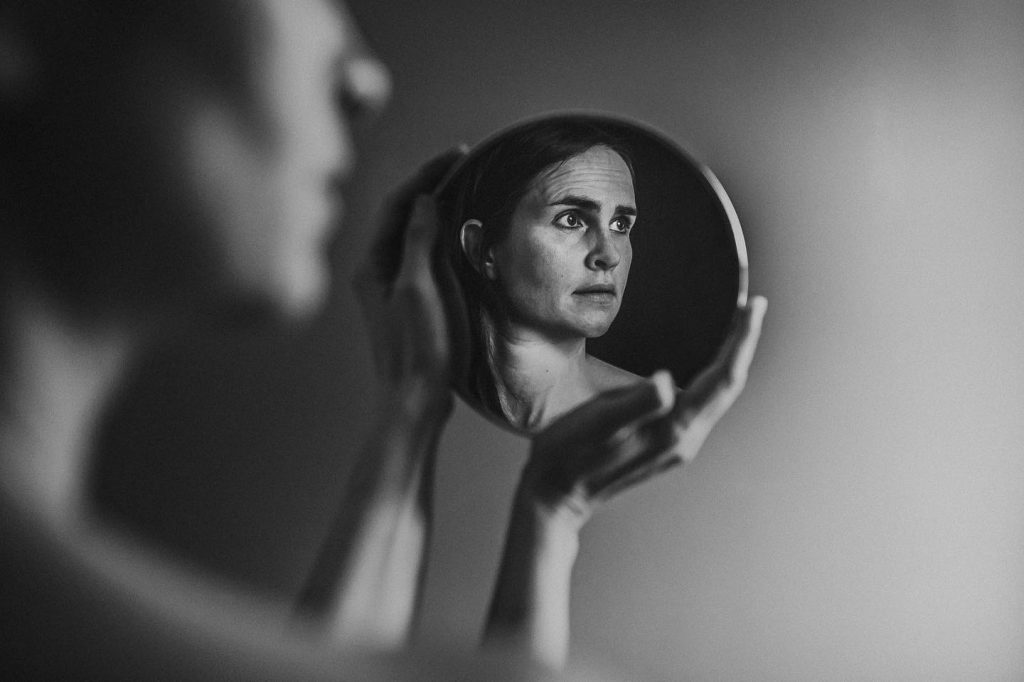
Robin Claire Fox | Reflections
March 17, 2023Robin Claire Fox | Reflections
Photography is inherently nostalgic. Every image taken is essentially the capturing of a moment from the past. That moment no longer exists, just the memory of it and an analogue print or a digital impression trapped on an electronic device. Many modern photographers harbour longings for the saturated or contrasty renderings of images made with processes and media (like Kodachrome) long out of use or no longer in production. Quite a few of them try to recreate the look and feel of these processes digitally, running their captures through filters and algorithms to bring back the visual past. While many are overdone (why keep it at 3 when you can dial it up to 10?), there are a few who have mastered the ability to make us believe that we are viewing an image taken decades ago. The evocation of this photographic past is (I believe) an effort to physically reconnect with it in a way that seems familiar, safe and warm… like sitting with your family watching slides projections of photos from a vacation taken years ago.
Ancaster, Ontario’s Robin Fox started taking photographs around the time of the birth of her most recent child as a conscious attempt to document her family’s childhoods for her future self to enjoy. She is a natural at capturing the uncertainties alongside the joys of growing up. A huge fan of Saul Leiter’s colour work, she has found a method of perfectly capturing the deep saturation and contrast Leiter exhibited in his work with Kodachrome and other slide films[1] in the 1950’s. Her images seem imbued with palettes that exist only in the memory of childhood, where everything was so much bigger and the world was awash with primary colours.
Read More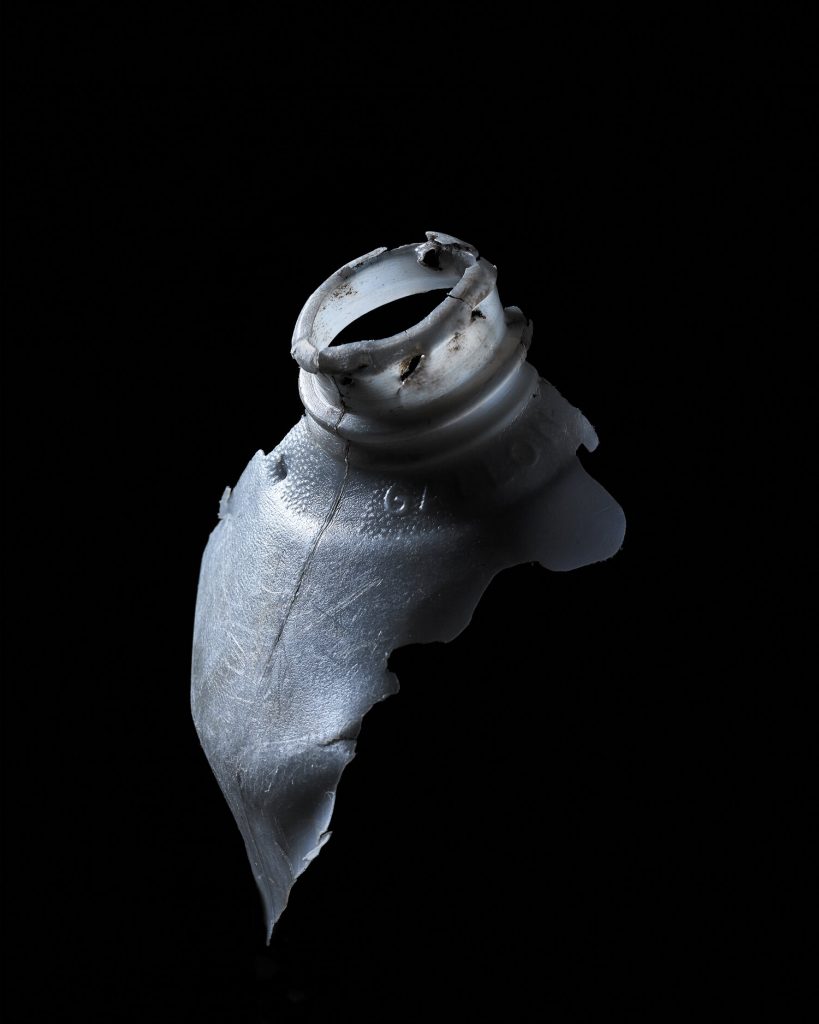
Jug Top, Lake Superior | John Healey
June 6, 2022Jug Top, Lake Superior | John Healey
“Plastic Beach is a set of still life images of plastic refuse discovered along the shores of the Great Lakes and key locations along the St. Lawrence river.
Here, discarded shopping bags, fragments of milk jugs, and crushed bottle caps — among other things — are reanimated to show us the carelessness with which we treat this habitat that is home to millions of creatures.
It reminds us of the cost of convenience, and serves as documentation of the relentless poisoning of the environment and ultimately ourselves.”
– J. Healey
John Healey was born in Toronto and grew up along the St. Lawrence River in Brockville, Ontario. Since 2015 he has devoted himself to lens-based image creation and education. John has just completed an artist in residency and is currently a full-time educator at the School of The Photographic Arts: Ottawa. He lives with his wife Amy, and Arno their Boston terrier.
~ Peppa Martin
Read More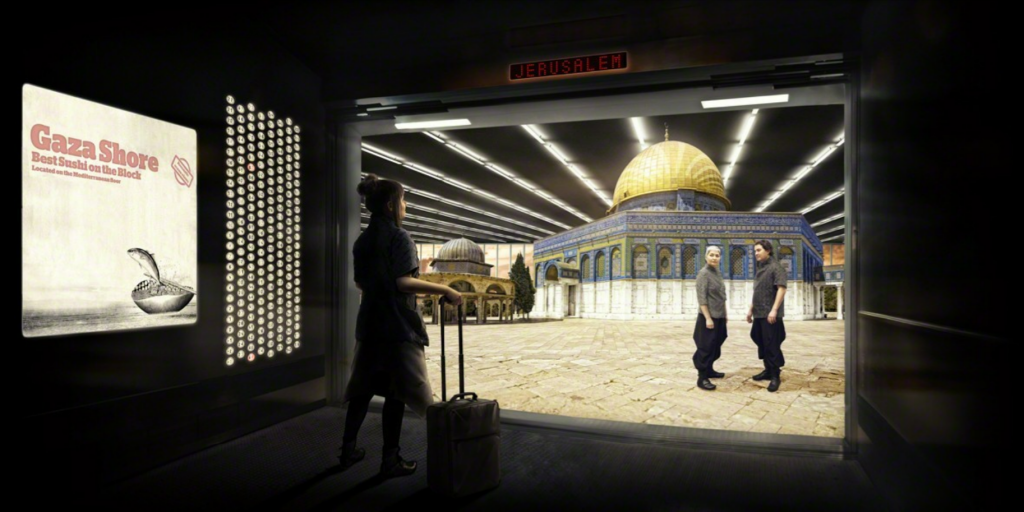
Jerusalem floor, 2012 | Larissa Sansour
March 22, 2022Jerusalem floor, 2012 | Larissa Sansour
Jerusalem floor, 2012 | Larissa Sansour, C-print (23 3/5 × 47 1/5 in / 60 × 120 cm)
On the flight from London I sit opposite a rumble seat where the stewardess places herself during takeoff. The stewardess is an Asian woman with a faraway look. I ask how often she makes this flight. Once or twice a month. Does she enjoy Israel? Not much. She stays in a hotel in Tel Aviv. She goes to the beach. She flies back. What about Jerusalem? She has not been there. What is in Jerusalem?
The illustrated guidebook shows a medieval map of the world. The map is round. The sun has a beard of fire. All the rivers of the world spew from the mouth of the moon. At the center of the world is Jerusalem. (Robert Rodriguez, The God of the Desert, Harper’s Magazine)
One can’t help but be thinking of the displaced, of refugees fleeing strife, with the situation in Eastern Europe right now; and let’s be frank – not all refugees are ‘equal’ with race and geopolitics rearing their ugly heads, as we see in both the history and present of Canada, and the wider world. I’m not often a fan of Ai Weiwei, but his work about Alan Kurdi touched a nerve that many of us may not have known – or my still deny – was exposed.
In light of that unpleasant reality, the works of Larissa Sansour, a Palestinian born artist were on my mind this week, especially her series Nation Estate. Jerusalem is not a neutral place, or an unloaded term. It may be the best example in ‘Western’ nation states – though in the Middle East – of a place that is intensely contested, an apex of Salman Rushdie’s notion of an ‘imaginary homeland.’
Even that tepid taupe of Wikipedia offers this: Given the city’s central position in both Israeli nationalism and Palestinian nationalism, the selectivity required to summarize more than 6,000 years of inhabited history is often influenced by ideological bias or background (please see Historiography and nationalism).
“In her Nation Estate (2012) series, Sansour conceptualizes an immense high-rise as a new home for her people. In each digitally manipulated photograph in this series, she places herself on a different floor of the edifice. We see her travel from the main lobby, to the Dead Sea, to Gaza, all in the space of a single building.”
“….Nation Estate takes place…in a mammoth high-rise that houses the entirety of the Palestinian people in one easy-to-navigate complex. Blurring the lines between utopian and dystopian realities, she paints a seemingly peaceful, albeit unfathomably sterile future where walls cease to function as barriers to human interaction.
“In a way there’s something positive about ‘Nation Estate.’ There are no check points and people can visit one city from another just by the use of the elevators. It’s an easy life that questions progress in general. Certain things are becoming easier, yet this skyscraper environment is completely inorganic,” Sansour stated. “It’s actually really a mockery when you think about it — living in a skyscraper. So it’s completely dystopian in the end.” (from here)
Who is a ‘real’ refugee? Who has a ‘right’ to live in a space, and to claim that they ‘own’ the land? Sansour’s works have often addressed this; we live in a world where to be Palestinian is often dismissed as illegitimate, if even ‘legal’, whatever that might even mean. Perhaps, as alluded to in Sansour’s work, the idea of ownership and wealth not only preclude but define / deform what it means to be a citizen, or even to be human.
In looking at this work, I also cannot help but consider the lament of Psalm 137: For how are we to sing the Lord’s song in a strange land?
You can see more of her work at her site, and her Instagram is @larissasansour.
~ Bart Gazzola
Read More
Karolina Kuras – Romance, Flight and Fluidity – Femme Folks Fest
March 14, 2022Karolina Kuras Romance, Flight & Fluidity by Mark Walton ~ Karolina Kuras The COVERT Collective is pleased to be participating in Femme... Read More
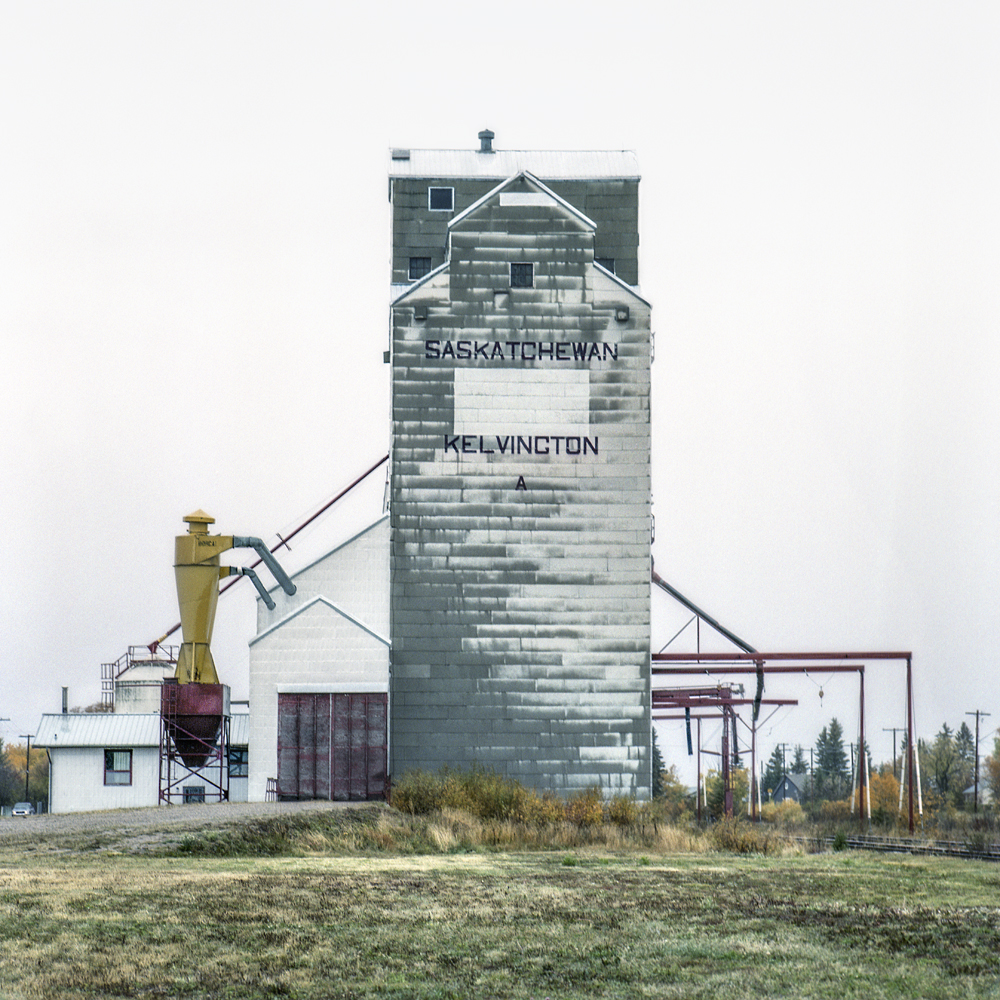
Discovering Self: The Photography of Vera Saltzman
January 4, 2022Discovering Self The Photography of Vera Saltzman Grain Elevator No. 18 This article originally featured in the TYPOLOGIES edition of photoED... Read More
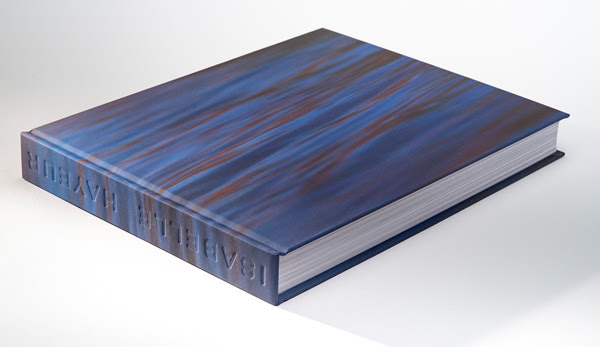
ISABELLE HAYEUR: Monograph
November 2, 2021ISABELLE HAYEUR: Monograph
By Mona Hakim, Peggy Gale, & Ann Thomas
Hardcover, 2020, 360 pages, available from Les éditions Plein sud
Texts in French and English $70 + Shipping
Committed to environmental causes since the 1990s, Isabelle Hayeur takes an acute critical look at the changes in our ecosystems caused by the devastating impacts of massive urbanization and industrialization on our territories.
This monograph, the most exhaustive publication to date on this artist’s work, leads us to the heart of her creative activity. Bringing together numerous visual documents, from her composite photo-graphs to portraits of citizen gatherings and activist groups by way of videos, installations in public spaces, and reflective texts, this richly illustrated book explores the vast production of an artist who has gained recognition in the contemporary art world, in Quebec and internationally. The texts present the reader with enlightened insights into the artist’s various accomplishments.
Read more about this monograph and order it here.
This recommendation appeared in the Fall 2021 – ECO ISSUE of PhotoED Magazine. If you’re looking for more Canadian photography inspiration check out PhotoED Magazine, in print + online https://www.photoed.ca
~ Rita Godlevskis
Read More
Recent Comments